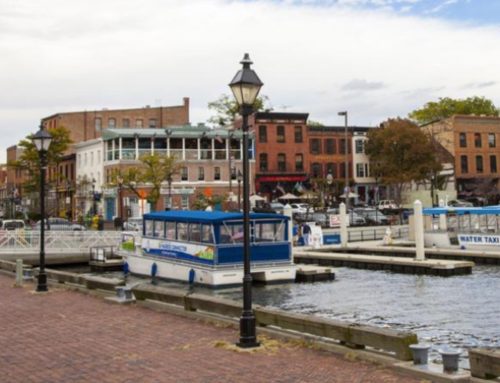Excerpt from the Baltimore Sun:
City leaders are considering creating two new historic districts in West Baltimore, a move they say could accelerate revitalization of a once-bustling shopping district that has been largely vacant for years.
Baltimore’s Planning Commission unanimously voted Thursday to formally designate the Howard Street Commercial Historic District and the Five and Dime Historic District. The measure must be approved by the city council before taking effect.
The districts are intended to protect the architecture of buildings such as the former Read’s Drug Store — the site of one of the first sit-ins of the Civil Rights movement — and Hochschild Kohn department store. But beyond preserving pieces of Baltimore’s history, advocates say labeling the area as historic could encourage more developers to invest there by establishing a distinct brand and sending the message that the city is committed to supporting its development.
“Our goal is to facilitate the redevelopment of those properties, but also keeping in mind the historic aspects of the districts and, hopefully, utilizing the historic architecture to move development along,” said Colin Tarbert, deputy chief for strategic alliances for Mayor Catherine Pugh, who serves on the planning commission.
The Five and Dime historic district would encompass an angular area bound by Fayette Street to the south, Howard Street to the west, Lexington and Clay streets to the north, and Liberty Street to the east. A little farther north, the Howard Street historic district would be a rectangular area just west of the Enoch Pratt Free Library bound by Mulberry, State and Franklin streets and Park Avenue.
The districts were once included in the development area known as the Superblock.
In the early 2000s, a $152 million proposal to build 300 apartments, more than 200,000 square feet of retail space and a 650-car parking garage was met with opposition from preservationists who opposed demolishing some of the area’s historic buildings.
The project was stalled by lawsuits and fell apart in 2013 when former Mayor Stephanie Rawlings-Blake declined to approve another extension of the land agreement with the developer Lexington Square Partners.
In recent years, the city has parceled out the city-owned vacant properties that largely comprise the area in smaller packages, and development has picked up at both city-owned and privately owned properties.
Le Mondo, an artist collective, is in the process of creating a new performance center in a renovated space in the 400 block of Howard Street. And nearby, dozens of new apartments and the popular Mt. Vernon Marketplace sprung up at 500 and 520 Park Ave.
Baltimore Development Corp., which oversees development of city-owned properties, is considering proposals for several more projects in the area.
Kimberly Clark, executive vice president of the Baltimore Development Corp., noted that the area serves as a critical link between Mt. Vernon, the central business district and the University of Maryland, and she said the historic district designations will make the areas even more attractive to developers.
“It really is a sort of hole in the doughnut,” Clark said. “This just helps to backfill and solidify and bring things together.”
The designations also serve as a branding tactic, signaling to developers an opportunity to restore a historic building while bringing something new to the community, said Kirby Fowler, president of the Downtown Partnership of Baltimore.
Projects in historic districts are reviewed by the city’s Commission for Historical and Architectural Preservation, which is tasked with ensuring new development is consistent with the area’s architecture.
The commission can provide developers with valuable context and research about the area where they plan to build, Fowler said. The panel’s attention indicates to developers that the districts are areas the city has a vested interest in seeing developed, he said.
District designations such as Station North Arts District and the Bromo Arts & Entertainment District have helped areas in North and West Baltimore rebuild, he said.
“Of all the parts of downtown, Howard Street has been the neighborhood that’s struggled the most over the past several decades. Sometimes you need a public trigger to excite developers,” Fowler said. “This type of intervention isn’t necessary on Pratt Street, but it is on Howard Street.”
Steve Yasko, executive director of the Bromo Arts & Entertainment District, said he thinks the area’s designation has helped drive the right kind of development to the area.
“Having a designated arts district downtown has catalyzed the perception that downtown Baltimore is growing up to be an incredible arts and entertainment hub that will be a magnet for the city’s residents in the years to come,” Yasko said.
The Howard Street and Five and Dime historic districts will have the same effect on those areas, Yasko said.
Baltimore City Councilman Eric Costello said he thinks the area is moving in the right direction, especially with the city’s approach to marketing properties individually, as opposed to as a “superblock.”
‘It’s building block by block,” Costello said. “You can’t change a neighborhood overnight.”

